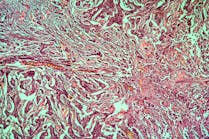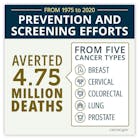Chronically high cholesterol levels are known to be associated with increased risks of breast cancer and worse outcomes in most cancers, but the link has not been fully understood.
In a study appearing online in the journal Nature Communications, a research team led by the Duke Cancer Institute has identified the mechanisms at work, describing how breast cancer cells use cholesterol to develop tolerance to stress, making them impervious to death as they migrate from the original tumor site.
“Most cancer cells die as they try to metastasize — it’s a very stressful process,” said senior author Donald P. McDonnell, PhD, Professor in the departments of Pharmacology and Cancer Biology and Medicine at Duke University School of Medicine. “The few that don’t die have this ability to overcome the cell’s stress-induced death mechanism. We found that cholesterol was integral in fueling this ability.”
McDonnell and colleagues built on earlier research in their lab focusing on the link between high cholesterol and estrogen-positive breast and gynecological cancers. Those studies found that cancers fueled by the estrogen hormone benefitted from derivatives of cholesterol that act like estrogen, stoking cancer growth.
But a paradox emerged for estrogen-negative breast cancers. These cancers are not dependent on estrogens, but high cholesterol is still associated with worse disease, suggesting a different mechanism might be at work.
In the current study using cancer cell lines, the Duke researchers found that migrating cancer cells gobble cholesterol in response to stress. Most die.
But in the what-doesn’t-kill-you-makes-you-stronger motif, those that live emerge with a super-power that makes them able to withstand ferroptosis, a natural process in which cells succumb to stress. These stress-impervious cancer cells then proliferate and readily metastasize.
The process appears to be used not only by ER-negative breast cancer cells, but other types of tumors, including melanoma. The mechanisms identified could be targeted by therapies.





